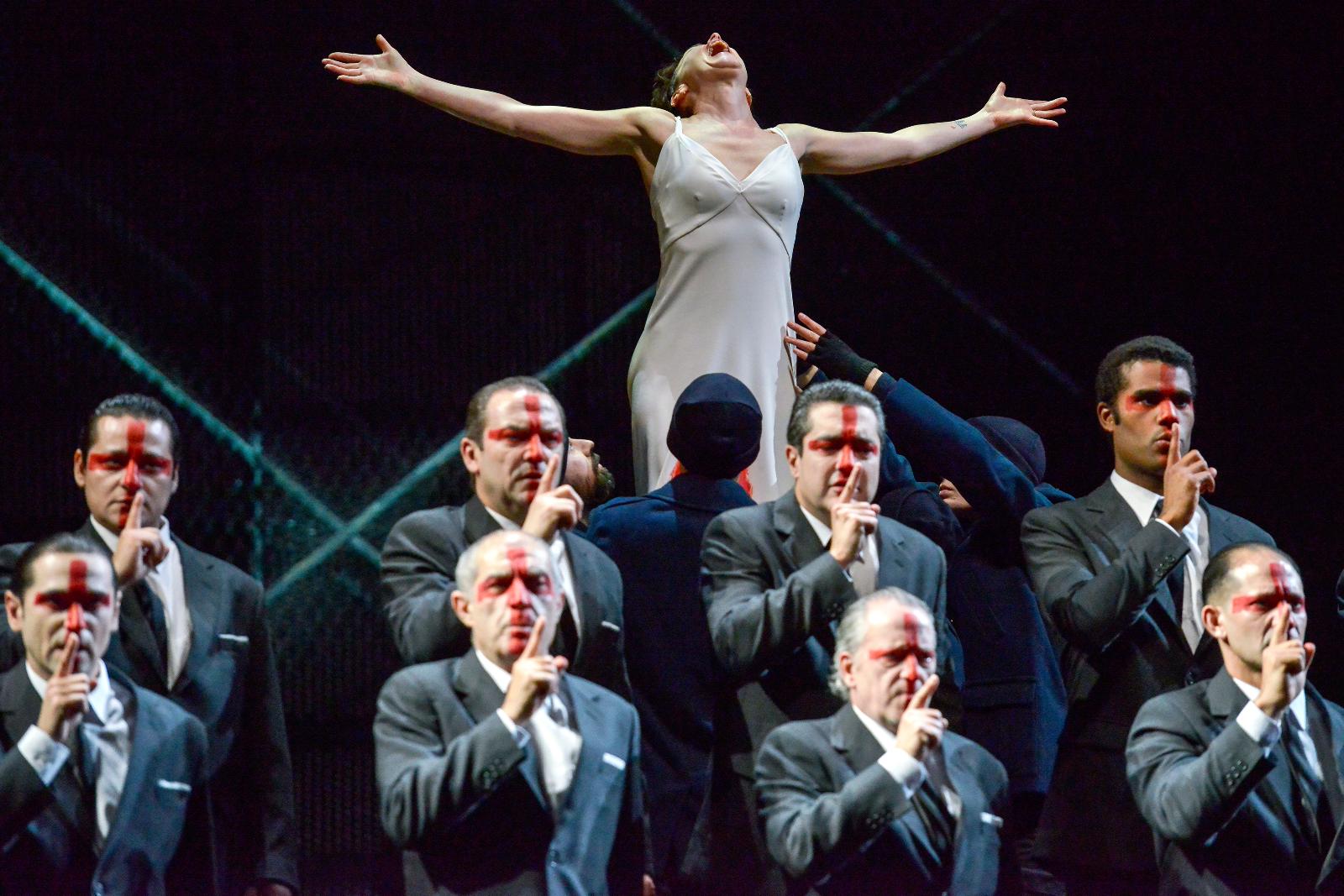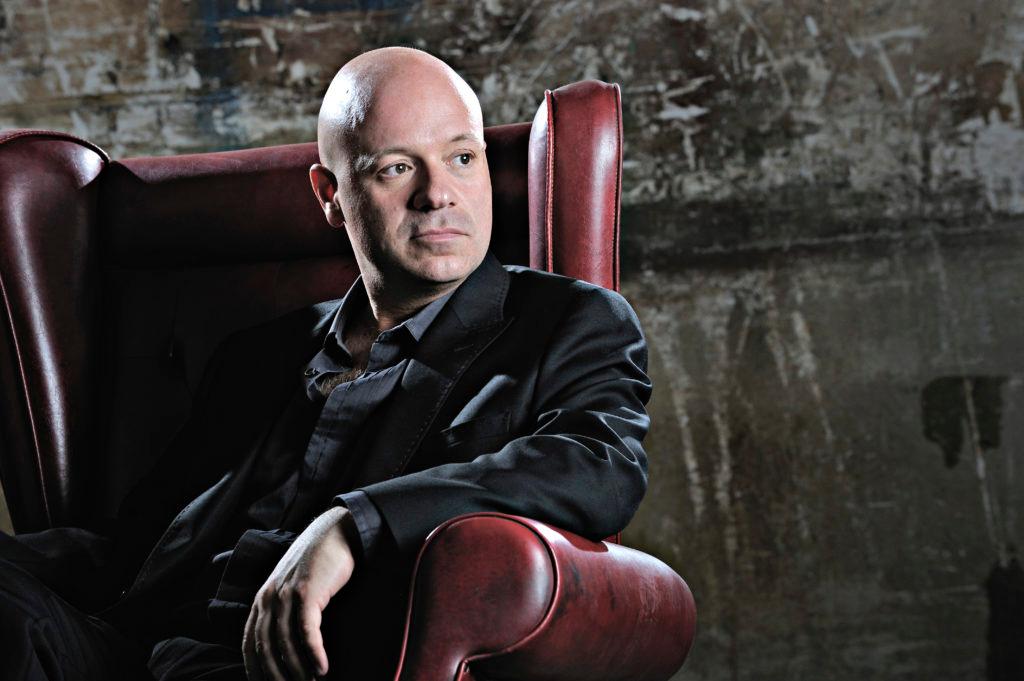It is perhaps best to start by invoking the name of Robert Gerhard (1896–1970), the first and still the most important modern (more or less) Catalan composer. Not just because 2020 marks fifty years since his death in exile in Cambridge, but also because of the example he set: via Felip Pedrell (1841–1922) – a composer and important educator – Gerhard linked the country’s musical tradition with new European music, led by Arnold Schoenberg (1874–1951), of whom he was a friend and student.
Gerhard’s music is a synthesis and an open door: from songs and dances with popular, traditional roots to electroacoustic experimentation. His symphonies, ballets and the cantata La peste (The Plague), his most ambitious piece, are testament to this.
The figure and life of Gerhard may well be portrayed as an image of rupture, of the end of all that might have been but was not due to the so-called civil war of the ’30s that meant almost all musical momentum was lost and, afterwards, required things to be put back into place one by one and bridges to be rebuilt here and there. But this synthesis (or duality, if you prefer) has continued to be a constant in the musical composition that followed him in Catalonia.
Of the following years, the complementary figures of Joan Guinjoan (1931–2019) and Josep Maria Mestres Quadreny (1929–) stand out. Both are sons of the teachings of Cristòfor Taltabull (1888–1964), a composer, student of Pedrell – like Gerhard – and of Max Reger (1873–1916), and teacher of Josep Soler and Xavier Benguerel, as well as the two musicians I have mentioned and a long list of other names.
Guinjoan always felt deeply rooted in the earth of his home region, Camp de Tarragona (just like Miró and Gaudí), while Mestres Quadreny was entirely cosmopolitan (like Tàpies and Brossa). Both of them, despite their differences, are writers of personal, innovative music. Guinjoan is always lively and jovial and looks back to ‘deconstruct’ tradition, in the style of Gaudí’s trencadís. Mestres Quadreny finds his home in the most experimental and intellectual places, in calculations, chance and randomness. Neither of them lose sight of the playful, bright spirit characteristic of this part of the Mediterranean, particularly present in 3a simfonia (3rd Symphony) and Homenaje a Carmen Amaya (Tribute to Carmen Amaya) by Guinjoan, and in Cop de poma (Apple Blow) and Quartet de Catroc (Catroc Quartet) by Mestres Quadreny.
Their work – theirs and their generation’s – was key in baking a new batch of composers: a group that was more numerous and spread out over time, less of a defined whole, and characterised by the ability to travel around the world from a position of relative freedom from the miseries of postwar Spain.
At each end, like two points of a spear, are Benet Casablancas (1956) and Hèctor Parra (1976). They are musicians with differing influences (the Viennese School for one, IRCAM in Paris for the other) who wrote eminently expressive, unabashedly lyrical music that has found the ideal ground for development in the symphonic field and, especially, in opera: Alter Klang (Ancient Loudness) and L'enigma di Lea (Lea’s enigma) by Casablancas and Inscape and Les Bienveillantes (The Kindly Ones) by Parra are good examples. Their music has also thrived in their corpus for piano, the real hard core and testing ground of their respective production.
Then we have Bernat Vivancos (1973), a composer who is devoted to choral music with a style that unites Nordic tradition (from Arvo Pärt to Lasse Thoresen) with the most vivid colours of the Mediterranean; Albert Guinovart (1962), who has found his own extremely personal sound while remaining faithful to the tonal system and is especially known for his musical theatre work; and Ramon Humet (1968) and Josep Maria Guix (1967), both heavily influenced by the Eastern world and, at the beginning, shaped and encouraged by Jonathan Harvey. There are many more I have neglected to mention, but these are a good sample of the diversity of such a broad, active generation.
While their predecessors mainly focused on spreading and promoting new music – as the land they cultivated was, unfortunately, unploughed – many of these musicians have thrown themselves into teaching, a paradigmatic example of which being Agustí Charles. Through their classrooms have passed a new, smaller generation, concentrated into a shorter period of time, of composers mainly born between the eighties and nineties.
Much of the newest, still-growing generation was nurtured between the walls of the Catalonia College of Music (ESMUC) in Barcelona. Raquel García-Tomàs, for example, is an unclassifiable creator committed to multi-disciplinarity, especially in terms of image/music, and excels in writing music for the stage. Then there is Núria Giménez, who has delved into the world of electroacoustic research and brought her findings to her instrumental compositions, having followed the example of her teacher Michael Jarrell in Geneva and made it her own. Luis Codera Puzo, meanwhile, is the driving force behind the Crossing Lines Ensemble and the OUT.SIDE new music cycle and a close follower of the aesthetics dominating the music of Central Europe (from Enno Pope to Stefan Prins) and other latitudes, especially the music and philosophy of Morton Feldman. Then we have Carlos de Castellarnau, who shapes sound material like a sculptor. He is inspired and influenced by art brut, and, like Hèctor Parra, owes a lot to IRCAM. Finally, there is Fabià Santcovsky, who is following in the footsteps of the composer-philosophers and writing essentialist yet refined music, influenced by Luigi Nono, Salvatore Sciarrino, Helmut Lachenmann and Marco Sroppa. These are just a handful of the names that have long been circulating around Europe and the rest of the world, as is the case in all spheres of culture and society nowadays.
Here in Catalonia, these musicians have found an outlet in new initiatives like L’Auditori’s Sampler Sèries or the Mixtur Festival (directed by fellow composers Oriol Saladrigues and Oliver Rappoport). They are even starting to be heard outside of L’Auditori, in the regular seasons at the Palau de la Música Catalana and the Gran Teatre del Liceu, and beyond: from the Manifeste, Huddersfield and Eclat festivals to the great concert halls.
A diverse, eclectic generation
This is undoubtedly the most diverse, eclectic generation of them all by definition. This is inevitable: a sign of the times. Freed from the burden of the aesthetic prejudices and academic commandments that carried too much weight in earlier years, they have all found their own path and their own audience: a small detail that must not be overlooked.
And just like that, perhaps without us realising – we often don’t appreciate what is right under our nose – and despite the ups and downs, a surprisingly continuous, admirably natural, radically modern fabric has been woven. From that broken voice, violently torn apart by the happenings of the turbulent twentieth century, new songs have been born and ring out with plenty to say and contribute to a world of new music that has a tendency to neglect voices from the south.
JOAN MAGRANÉ FIGUERA
Composer
@joanmagrane










